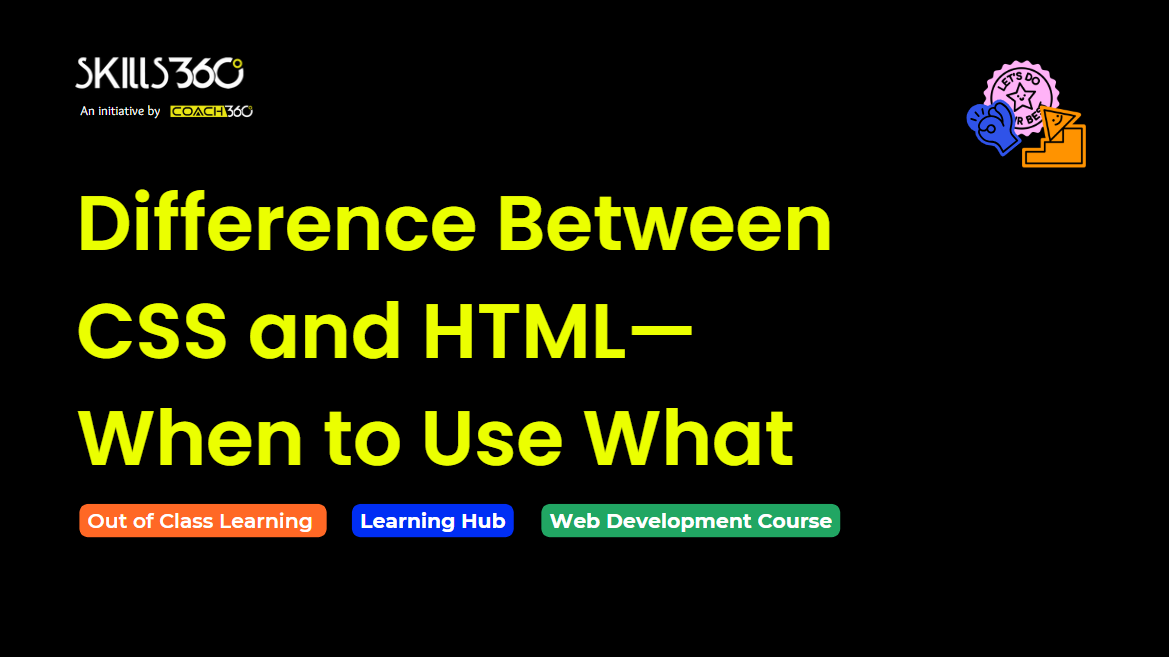- Featured article
- People at Skills360 23 - April 2025 | 12 min read

HTML and CSS to a website are what steel beams and concrete are for a tall standing skyscraper. These languages lay the foundations for websites and determine how the site performs and looks. That is why if you enroll yourself for Skills360’s frontend development course, the first thing you’ll learn about is HTML and CSS.
Beginners often find themselves puzzled about what exactly these languages are and how they work. Although both of them are highly crucial for a website’s performance, they both have different purposes. Eager to learn more? Here are the basic differences between the two languages and their specific purposes.
HTML, short for HyperText Markup Language, is the skeleton of a website. It is the semantic structure that tells a browser what elements are on a certain page and how they are arranged. HTML defines content like headings, paragraphs, links, images, and buttons, and organizes this data into logical sections using tags like <div>, <header>, <footer>, and <article>. These tags give meaning and hierarchy to the content. HTML also enables the embedding of other media, like videos or interactive forms, making websites dynamic and functional.
Whale HTML refers to the bones of a website, CSS is the skin on top of it. Short for Cascading Style Sheets, CSS sets the colors, fonts, and spacing of the content placed on the website. It is used to control layouts and positioning. It also adds animations, hover effects, and transitions and helps in creating responsive designs for different screen sizes.
Now that you know exactly what HTML and CSS are, you must also learn about when and how to use each language. Knowing so can help you avoid building a site that’s readable but ugly or a site that looks great but fails to load or function properly. At Skills360, we train our developers to master the use of both these two technologies simultaneously for better results. Here are the key differences we teach our students that determine which one is used where.
| Purpose | HTML defines the structure and content of a web page, including the text, images, buttons, and forms. | CSS controls the presentation and styling of a page including the colors, layouts, fonts, and animations. |
|---|---|---|
| Syntax | HTML uses tags (<h1>, <p>, <div>) to organize content hierarchically. | CSS uses selectors and rules (h1 { color: red; }) to style HTML elements. |
| Dependency | HTML can exist without CSS but results in an ugly yet functional page. | CSS is useless without HTML, as every design needs elements to style. |
| Output | HTML determines what content the users see. | CSS determines how they see it. |
| Maintenance | Changes to HTML involve restructuring the content | CSS changes refine aesthetics without altering the content. |
In simple and easy words, HTML is the architectural framework of a building, while CSS is its interior design. At Skills360, we advise our students to keep the two separate by maintaining separate files for structure (index.html) and styling (style.css). This makes it easier for you to scale and debug, and with just a little practice, you can progress from a beginner to a pro in no time.


Get curated emails on out of class learning and work on your skills on your free time.